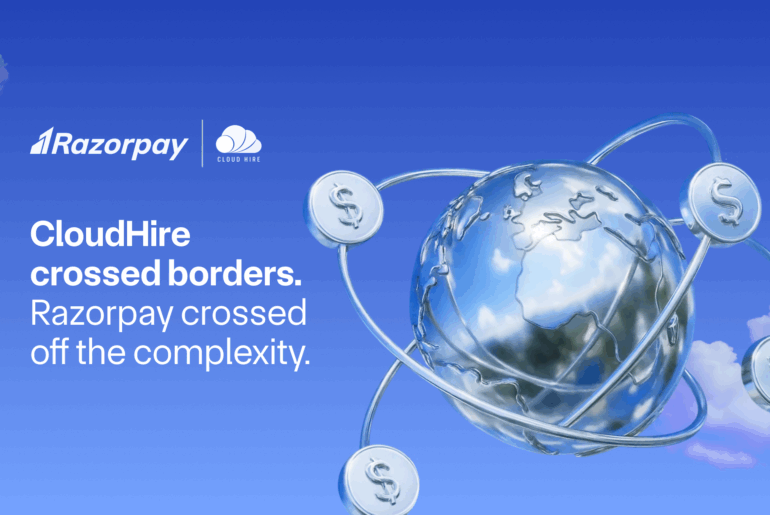In today’s fast-paced world, digital payment technologies like NFC and QR codes have revolutionised how we transact. These methods allow customers to pay with just a tap or scan, making the checkout process quicker and more convenient than ever before.
For businesses, understanding the key differences between NFC vs QR code payment is crucial. Choosing the right technology can significantly impact customer experience, operational efficiency, and even cost savings.
With the Razorpay Payment Gateway and POS solutions, you can easily accept both NFC vs QR code payments while ensuring the highest level of security for your customers’ data.
Key Takeaways
NFC = Tap & Pay: Works via near-field communication between a card/phone and a POS device.
QR = Scan & Pay: Customers scan a code with their app to complete payment.
Customer Preference Varies: NFC is faster in-store; QR codes dominate in India for small merchants.
Razorpay Advantage: Accept UPI QR and card/NFC payments through Razorpay’s multi-mode solutions.
What Is NFC Payment?
NFC (Near Field Communication) is a short-range wireless communication technology that enables data exchange between devices in proximity. In payments, NFC enables a customer’s smartphone, smartwatch, or contactless card to communicate with a merchant’s POS terminal.
Some common examples of NFC payments include:
- Contactless credit and debit cards
- Mobile wallets like Apple Pay and Google Pay
- Wearables such as smartwatches and payment bands
NFC payments are particularly popular in retail stores, transit systems, and other scenarios where quick, in-person checkout is essential. The technology builds upon older concepts like RFID and has gained significant traction since its introduction in smartphones in 2011.
Did You Know?
NFC transactions can be completed in under 1 second, making them one of the fastest in-store payment methods.
What Is QR Code Payment?
QR code payment is a method in which customers scan a merchant-displayed QR (Quick Response) code with their smartphone camera. The QR code contains encoded transaction details that trigger a payment process in the customer’s UPI, mobile wallet, or banking app.
Here are some typical use cases for QR code payments:
- Neighbourhood kirana stores
- Street vendors and small merchants
- E-commerce deliveries and pickups
- Restaurant bills and takeaway orders
QR codes have seen massive adoption in India, primarily driven by the growth of UPI (Unified Payments Interface). The simplicity and low cost of QR code payments make them ideal for small businesses and informal sectors.
Did You Know?
According to the CEIC report, as of March 2025, around 657.93 million Indians use UPI QR codes for payments.
NFC vs QR Code Payments: Key Differences
Let’s dive deeper into the key differences between NFC and QR code payment across various parameters:
| Category | NFC Payments | QR Code Payments |
| Technology | NFC (Near Field Communication) uses short-range radio frequency to enable contactless communication between two devices, such as a smartphone and a payment terminal. | QR (Quick Response) code payments use an optical scanning system in which a smartphone camera scans a merchant’s displayed code to process the transaction. |
| Speed & Convenience | Extremely fast and seamless, requiring just a tap of the phone or card on the terminal. Ideal for quick checkouts. | Slightly slower, as users must open an app, scan the QR code, and confirm payment. However, it doesn’t require any special device for merchants. |
| Infrastructure & Cost | Needs an NFC-enabled POS terminal, making it costlier for small merchants. Suitable for organised retail stores and premium outlets. | Requires only a printed or digital QR code, making it low-cost and easy for small vendors and local shops to adopt. |
| Popularity in India | Still limited in reach, mostly seen at high-end outlets and among digital wallet users. | Highly popular across India, thanks to UPI integration, government support, and ease of use for both merchants and consumers. |
With Razorpay Payment Gateway, you can seamlessly accept both NFC-based card payments and UPI QR transactions through a single platform.
Pros and Cons of NFC Payments
Pros:
- Super-fast checkout experience. Just a quick tap completes the payment within seconds, making it ideal for busy retail stores and customers who prefer speed and convenience.
- Highly secure, as it uses encrypted tokens instead of actual card details, reducing the risk of data theft and ensuring a safer transaction process.
- Compatible with smartphones, smartwatches, and contactless debit or credit cards, offering flexibility across multiple digital payment platforms.
Cons:
- Merchants need to install compatible terminals, increasing setup costs, especially for small or local businesses.
- Limited awareness and infrastructure in smaller towns slow down their nationwide adoption compared to more accessible QR code payments.
Pros and Cons of QR Code Payments
Pros:
- Merchants only need a printed or digital QR code, eliminating the need for expensive POS machines or hardware investments.
- Perfect for local shops, street vendors, and micro-merchants who can easily accept payments without technical setup or maintenance.
- With direct integration with UPI apps like Paytm, PhonePe, and Google Pay, QR payments are highly accessible and familiar to most users.
Cons:
- Users need to open a payment app, scan the code, and confirm the payment, making it slightly slower than NFC tap payments.
- Fake or tampered codes can redirect payments to fraudsters, making it crucial to use verified and secure QR code providers.
When Should a Business Use NFC vs QR Payments?
The choice between NFC vs QR code depends on factors such as your business type, average transaction size, customer preferences, and location. Here are some general guidelines:
- NFC payments are ideal for high-volume retail outlets, quick-service restaurants, and businesses focused on premium checkout experiences.
- QR code payments are suitable for small merchants, businesses aiming for pan-India reach, and those without existing POS hardware.
With Razorpay, merchants can accept UPI QR codes, cards, and NFC-based payments through a unified platform. This allows you to offer your customers the preferred payment methods without compromising on convenience or security.
“Whether you are a small kirana store or a large retail chain, Razorpay lets you offer the payment methods your customers love.”
Conclusion
NFC and QR codes have emerged as two of the most popular digital payment methods, each with its own strengths and use cases. While NFC payments offer unmatched speed and convenience for in-store transactions, QR codes have democratised digital payments for millions of small merchants across India.
As a business owner, it’s crucial to understand the nuances of NFC vs QR code payment and choose the right mix based on your customers’ preferences and operational requirements. By partnering with a comprehensive payment solution provider like Razorpay, you can seamlessly accept both NFC and QR code payments while maintaining the highest security and reliability standards.
Ready to streamline your payments?
FAQs
What is the main difference between NFC and QR code technology for payments?
NFC uses short-range wireless communication between a customer’s device and a POS terminal. QR codes, on the other hand, are scanned using a smartphone camera to initiate payment through UPI or wallet apps.
Which is more secure: NFC or QR code payments?
Both NFC and QR code payments are secure when processed through trusted providers like Razorpay. NFC payments use tokenisation to protect card details, while dynamic QR codes prevent tampering and fraud.
Can small businesses in India use NFC payments?
Yes, small businesses can accept NFC payments through contactless POS terminals. However, given the higher infrastructure costs, QR code payments are often more viable for micro-merchants.
Are QR code payments free for merchants?
The cost of QR code payments depends on the provider. With Razorpay, merchants can generate UPI QR codes at no additional cost and pay a competitive MDR (Merchant Discount Rate) per transaction.
Does Razorpay support both QR and NFC transactions?
Absolutely! Razorpay offers a range of payment solutions, including Payment Gateway, Payment Links, QR Codes, and POS terminals. This allows merchants to accept both QR and NFC payments with ease.

